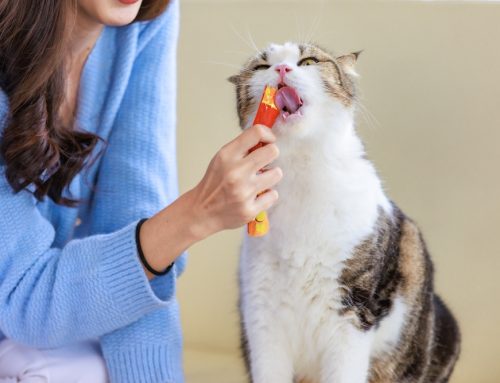Many holidays will be here soon, and the sweets will come with them. Chocolaty treats are timeless holiday staples, and you and your pet may have a difficult time resisting the food’s delicious aroma and sweet flavor. However, chocolate can be toxic and, in some cases, deadly to pets. To learn the bitter truth about chocolate’s toxicity to pets, read our Neighborhood Veterinary Centers of Calder team’s guide about the risks this sweet treat poses to pets and what to do if your pet accidentally ingests it.
Why is chocolate dangerous to pets?
Chocolate contains theobromine and caffeine, which belong to the methylxanthine chemical class. While humans can metabolize these compounds relatively easily, pets process them much more slowly, making your furry pal susceptible to the toxic effects. Theobromine affects a pet’s central nervous and cardiovascular systems, and if they ingest a large amount, your pet can develop severe health complications, including seizures, heart problems, and in some cases, death.
Are some chocolate types more dangerous for pets than others?
While chocolate of any kind or quantity can harm a pet, chocolate toxicity’s risk and severity depend on factors such as theobromine’s and caffeine’s concentration, the quantity a pet consumes, and their body weight. Common chocolate types’ pet toxicity level from most to least toxic is ranked as follows:
- Cocoa powder — Used in baking and cooking, cocoa powder contains the highest theobromine and caffeine levels, making this ingredient the most toxic to pets.
- Unsweetened baker’s chocolate — This highly concentrated chocolate, primarily used in baking, contains high theobromine and caffeine levels.
- Dark chocolate — Less processed and containing more cocoa than other chocolate candy types, dark chocolate is toxic to pets, even in a small amount.
- Semisweet chocolate — Often used in chocolate chip cookies and various desserts, semisweet chocolate is also high in theobromine and caffeine.
- Milk chocolate — While still toxic, milk chocolate contains lower theobromine and caffeine levels than dark chocolate. However, the risk remains, especially for small pets or in large quantities.
- White chocolate — This chocolate type has the least amount of theobromine and caffeine but is still unsafe for pets. If your pet ingests a large amount of white chocolate, they could develop gastrointestinal (GI) upset, including vomiting and diarrhea.
What are chocolate toxicity signs in pets?
Chocolate toxicity signs typically appear 6 to 12 hours after ingestion and can range from minor GI upset, to serious cardiovascular issues. The more bitter the chocolate, the higher theobromine content, so even if a pet ingests a small amount of this chocolate type, they are likely to be affected. Depending on your pet’s weight, if they eat a small amount of milk or white chocolate, they may not develop toxicity, but they can still become ill from the fat and sugar content, which can cause pancreatitis in severe cases, or vomiting and diarrhea in pets who have sensitive stomachs. Pets’ chocolate toxicity signs include:
- Vomiting
- Diarrhea
- Nausea
- Increased heart rate
- Excessive thirst
- Excessive urination
- Hyperactivity
- Restlessness
- Increased body temperature
- Rapid breathing or panting
- Muscle tremors or twitching
- Low blood pressure
- Seizures
- Coma
What should I do If my pet ingests chocolate?
If you know or suspect your pet has ingested chocolate, you must act quickly. While acknowledging that the potential consequences can be scary, you need to stay calm to help ensure your pet has the best outcome. Follow these tips:
- Determine the chocolate type and amount — Try to determine the chocolate type and amount your pet has ingested, and when they ingested the sweet. Find the product label if you can.
- Contact veterinary professionals — Contact our Neighborhood Veterinary Centers of Calder team, the American Society for the Prevention of Cruelty to Animals (ASPCA) Animal Poison Control Center, or the Pet Poison Helpline to determine whether your pet needs medical attention. Be prepared to share details about your pet, including the amount of chocolate they consumed, the chocolate type, your pet’s weight, when your pet ate the chocolate, and any underlying medical conditions. Do not attempt to induce vomiting without professional guidance.
- Err on the side of caution — If you do not know the amount of chocolate your pet ate, or they are already showing toxicity signs, head straight to the nearest veterinary emergency facility.
How can I protect my pet from chocolate toxicity?

You can protect your pet from chocolate toxicity by securely storing the sweet out of your pet’s reach and educating all family members, especially children, about the dangers of feeding chocolate to pets. If you have children, teach them not to leave chocolate unattended, and supervise your pet during times when chocolate treats are prevalent, such as during social events or holidays.
Remember, regardless of the type, no chocolate is safe for pets, and you must always keep the food out of their reach. If you suspect that your pet has ingested chocolate, contact our Neighborhood Veterinary Centers of Calder team or the Pet Poison Helpline immediately for expert advice and treatment options.






Leave A Comment